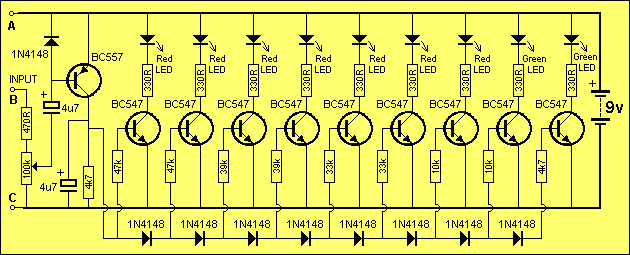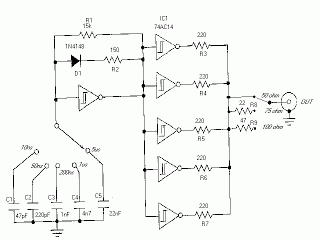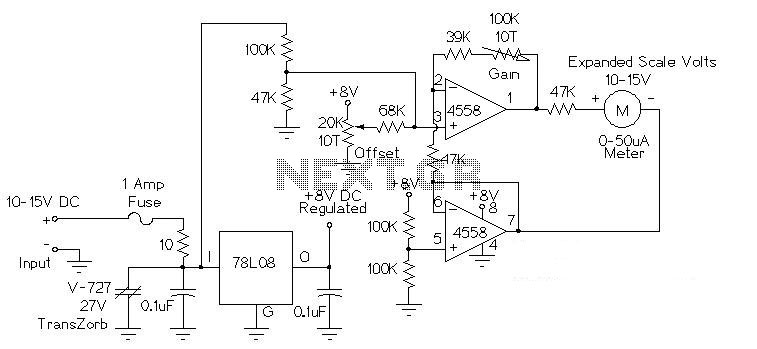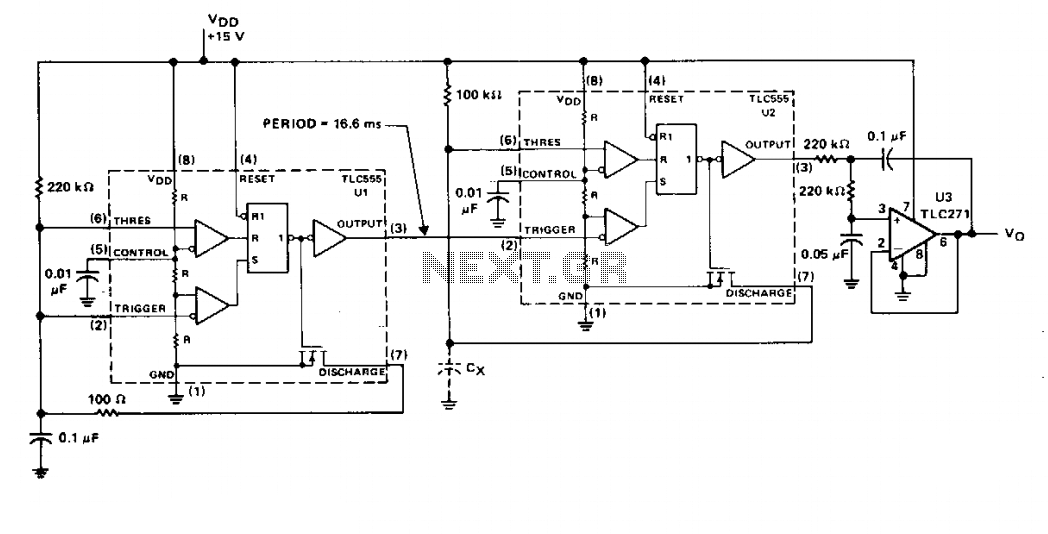
Decibel Meter
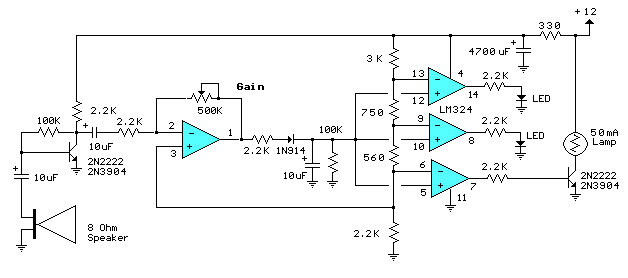
The circuit below responds to sound pressure levels ranging from approximately 60 to 70 dB. An 8-ohm speaker captures the sound, which is then amplified by a transistor stage and one section of an LM324 operational amplifier.
The described circuit functions as a sound level detection system, capable of registering sound pressure levels between 60 and 70 dB. The initial sound capture is facilitated by an 8-ohm speaker, which acts as a transducer, converting acoustic energy into an electrical signal. The output of the speaker is a low-level audio signal that requires amplification for further processing.
The first amplification stage employs a transistor, which serves to increase the amplitude of the audio signal. This transistor can be configured in a common-emitter configuration to provide both voltage and current gain, ensuring that the signal is sufficiently amplified before it reaches the operational amplifier stage.
Following the transistor stage, the LM324 operational amplifier is utilized. This quad op-amp IC allows for versatile configurations, such as inverting or non-inverting amplification, depending on the specific requirements of the application. In this circuit, one section of the LM324 is utilized to further amplify the signal, enhancing the detection capability of the circuit.
The output of the LM324 can then be interfaced with additional circuitry, such as a microcontroller or an LED indicator, to provide visual feedback or to trigger further actions based on the detected sound levels. The design emphasizes stability and low noise, ensuring accurate sound level detection across the specified range.
Overall, the combination of the 8-ohm speaker, transistor stage, and LM324 op-amp creates an effective sound detection circuit suitable for various applications requiring sound level monitoring.The circuit below responds to sound pressure levels from about 60 to 70 dB. The sound is picked up by an 8 ohm speaker, amplified by a transistor stage and one LM324 op-amp section 🔗 External reference
The described circuit functions as a sound level detection system, capable of registering sound pressure levels between 60 and 70 dB. The initial sound capture is facilitated by an 8-ohm speaker, which acts as a transducer, converting acoustic energy into an electrical signal. The output of the speaker is a low-level audio signal that requires amplification for further processing.
The first amplification stage employs a transistor, which serves to increase the amplitude of the audio signal. This transistor can be configured in a common-emitter configuration to provide both voltage and current gain, ensuring that the signal is sufficiently amplified before it reaches the operational amplifier stage.
Following the transistor stage, the LM324 operational amplifier is utilized. This quad op-amp IC allows for versatile configurations, such as inverting or non-inverting amplification, depending on the specific requirements of the application. In this circuit, one section of the LM324 is utilized to further amplify the signal, enhancing the detection capability of the circuit.
The output of the LM324 can then be interfaced with additional circuitry, such as a microcontroller or an LED indicator, to provide visual feedback or to trigger further actions based on the detected sound levels. The design emphasizes stability and low noise, ensuring accurate sound level detection across the specified range.
Overall, the combination of the 8-ohm speaker, transistor stage, and LM324 op-amp creates an effective sound detection circuit suitable for various applications requiring sound level monitoring.The circuit below responds to sound pressure levels from about 60 to 70 dB. The sound is picked up by an 8 ohm speaker, amplified by a transistor stage and one LM324 op-amp section 🔗 External reference


